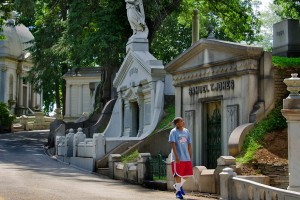Features: The Warren Commission, The Truth, and Arlen Specter: Part 1
A GOOD DEAL of this doubt is based on research of the hard-core evidence originally done by a Philadelphia lawyer named Vincent Salandria. He has probably probed deeper into the Commission’s investigation than anyone in the country, was consulted by both Epstein and Lane in their own research, and wrote a detailed analysis of the shot trajectories and wounds published in the Legal Intelligencer, the local law daily, shortly after the Commission Report was issued.
Vincent Salandria never believed the Warren Commission Report was the truth. A slim, crew-cut, 38-year-old Penn Law grad, ACLU legal consultant and center city resident, Salandria has become obsessed with the facts of the assassination and the details of the Commission’s investigation. It is an obsession based on a sharp sense of history. The rise of dictatorships, he contends, has always corresponded to the abdication by the individual of his responsibility to take an
active interest in the function of government.
”I’m particularly sensitive to the possibilities of governments not being as diligent as they should in situations of this sort," he says. "Why am I particularly sensitive? I guess it comes from my Italian peasant background which always disputes governmental action and is inherently skeptical."
Before the Warren Commission even issued its Report, Salandria was disturbed by conflicting newspaper accounts of what it supposedly was coming up with. He did not like the idea of the secret hearings. When it was leaked that the Commission was probably going to conclude that a single bullet hit both Kennedy and Connally, he became even more concerned. "I thought you had to be objective about it," he says. "If this had happened in Smolensk or Minsk or Moscow, no American would have believed the story that was evolving about a single assassin, with all its built-in contradictions. But because it happened in Dallas, too many Americans were accepting it."
Salandria made himself the most interested private citizen in the country on the workings of the Warren Commission. He spent his vacation with his wife and child in Texas checking the details of the assassination site. He began keeping a file of every news report dealing with the investigation and when he learned that it was having special problems wrestling with the question of shot trajectories and wounds, he assumed that it would be the key area and began a concentrated study of that part of the assassination. He did not know at the time that the Commission had assigned responsibility for that area to another Philadelphia lawyer.
Then, when the Report was finally issued, Salandria undertook an intensive study of it and all the evidence that was made public. "As a lawyer," he says, "I am sometimes not entirely sure that a client is telling the truth. What tells me whether he is or not are the minute aspects of the evidence, because if a person is fabricating he cannot think of all the details, and it is the details which give him away.
"My initial feeling was that if this was a simple assassination, as the Commission claimed, with one assassin firing three shots from one vantage point, the facts would come together very neatly. If there were more than one assassin the details would not fit”


